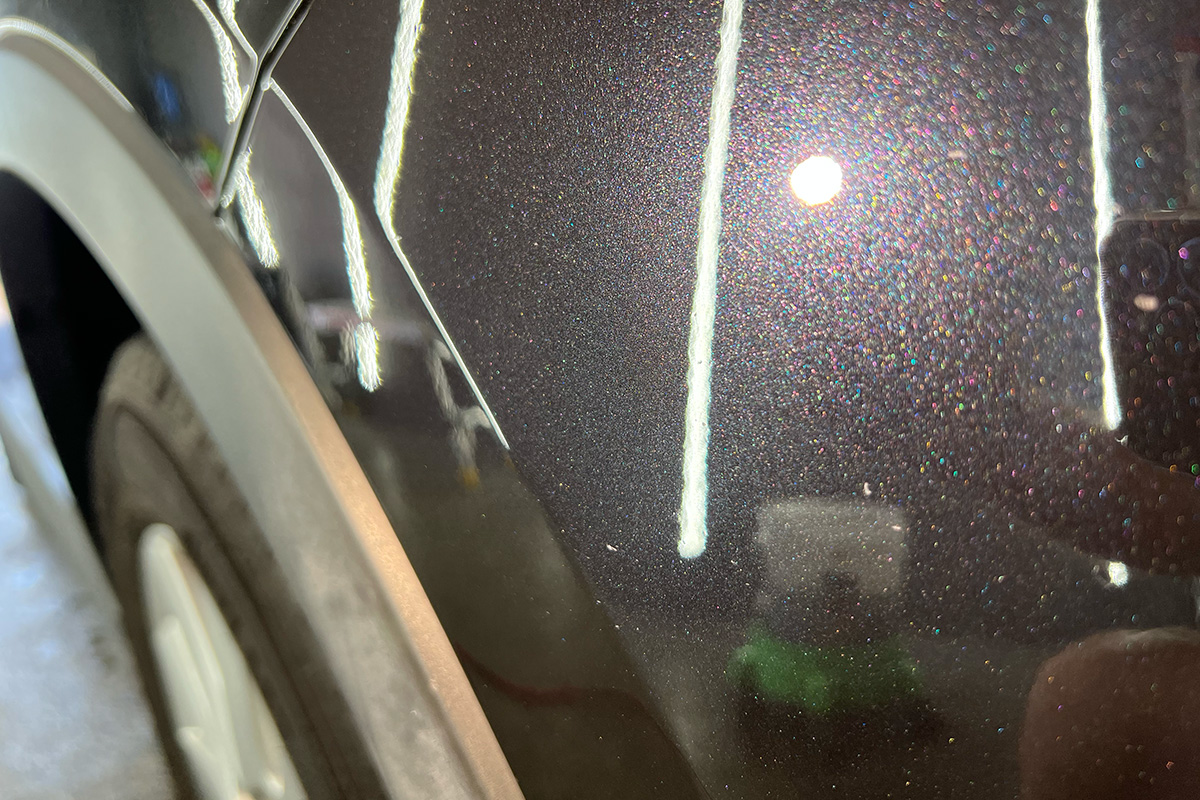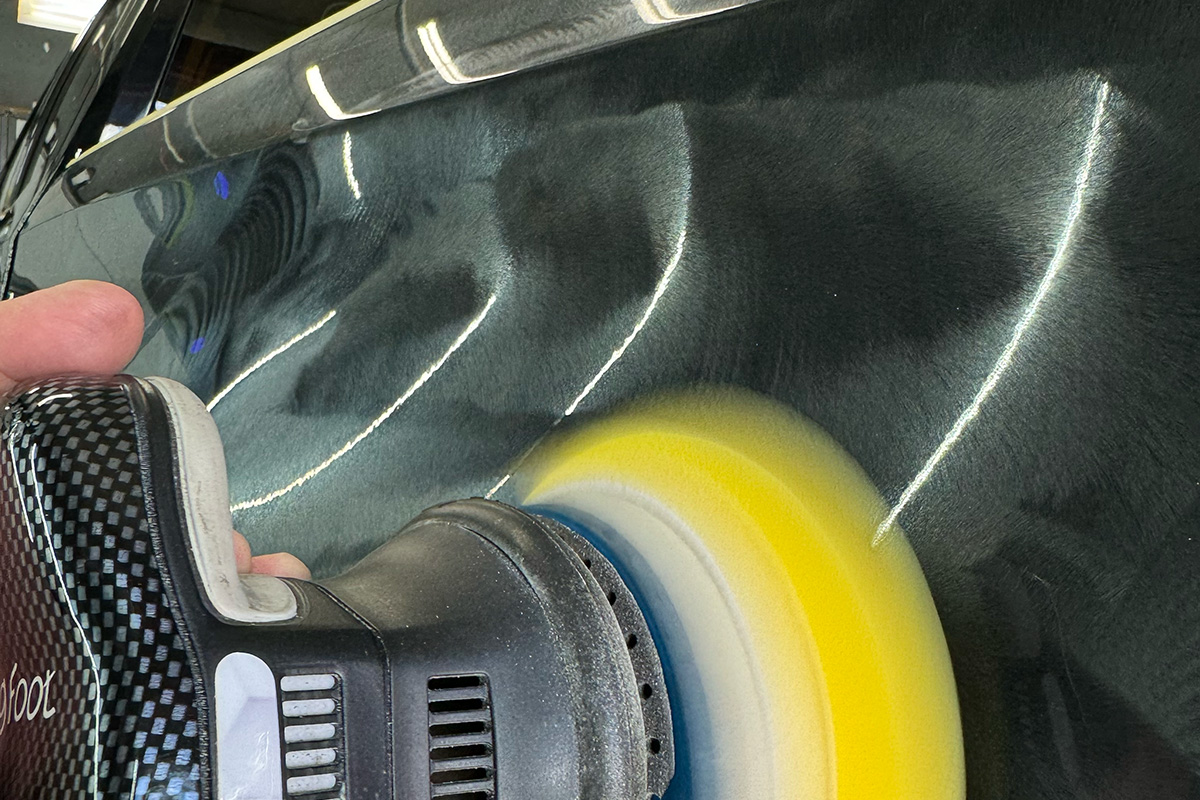When most people think of detailing, they picture the end result: a deep, mirror-like shine that turns heads everywhere. But here’s the truth — that flawless gloss doesn’t come from the final step. It comes from the prep work.
The time and care put into preparation is what separates a basic buff job from a true professional finish. Let’s take a closer look at why prep work matters so much, and how tools and techniques like taping plastics, polishing properly, and using gloss meters and paint thickness gauges make all the difference.
Taping Plastics during Prep Work: Protecting More Than Just Paint
One of the first signs of a professional detailer is whether they tape off the plastics and trim before polishing.
- Why it matters: Polishing compounds can stain, haze, or burn porous plastics and rubber trim. Once damaged, these parts are difficult — and sometimes impossible — to restore.
- The benefit: By taping edges, emblems, vents, and trim, detailers ensure that only the paint gets corrected, leaving the rest of the vehicle safe and clean.
Taping is a small step that shows a big attention to detail — and it protects your investment in the long run.
Polishing: More Than Just Shine
Polishing isn’t just about making paint shiny. It’s a carefully controlled process that removes imperfections in the clear coat, such as:
- Swirl marks
- Scratches
- Haze and oxidation
- Factory or dealership sanding marks
A skilled detailer uses different pads, machines, and compounds depending on the paint’s condition and thickness. Polishing is where most of the transformation happens — and rushing it or skipping steps can mean subpar results.
Paint Thickness Gauges: Working Smart, Not Blind
Not all paint is created equal. Some panels are thicker, some thinner, and repainted panels may vary drastically. A paint thickness gauge tells the detailer exactly how much material is available to work with.
- Why it matters: If the clear coat is thin, aggressive correction could risk burning through. If it’s thick, there’s more room to refine.
- The benefit: Using this tool ensures the correction is safe, customized, and effective for each vehicle.
Without it, a detailer is essentially polishing blind — and that can lead to irreversible damage.
Gloss Meters: Measuring the Results
Shine can be subjective — but a Rhopoint Gloss Meter takes the guesswork out.
- What it does: It measures the reflection of light at specific angles, giving a numerical value to gloss levels.
- Why it matters: This allows the detailer to show before-and-after results scientifically, proving that the polishing and correction process truly increased clarity and reflectivity.
It’s the difference between “looks good” and “proven to be flawless.”
The Secret Behind Perfect Gloss
At the end of the day, the incredible gloss you see after a detail doesn’t just come from the final wax, sealant, or ceramic coating. It comes from hours of careful prep work:
- Protecting trim with tape
- Correcting paint with the right techniques
- Measuring thickness for safe polishing
- Quantifying gloss improvements with precision tools
That’s why choosing the right detailer is so important. A true professional doesn’t cut corners — they focus on the details you don’t see, so that the results you do see blow you away.
Let’s wrap it up:
The secret behind perfect gloss isn’t a product — it’s the process.
When you’re researching a detailer to care for your vehicle, look for the one who tapes, measures, corrects, and proves their results. That’s how you know your paint is in the best hands.


